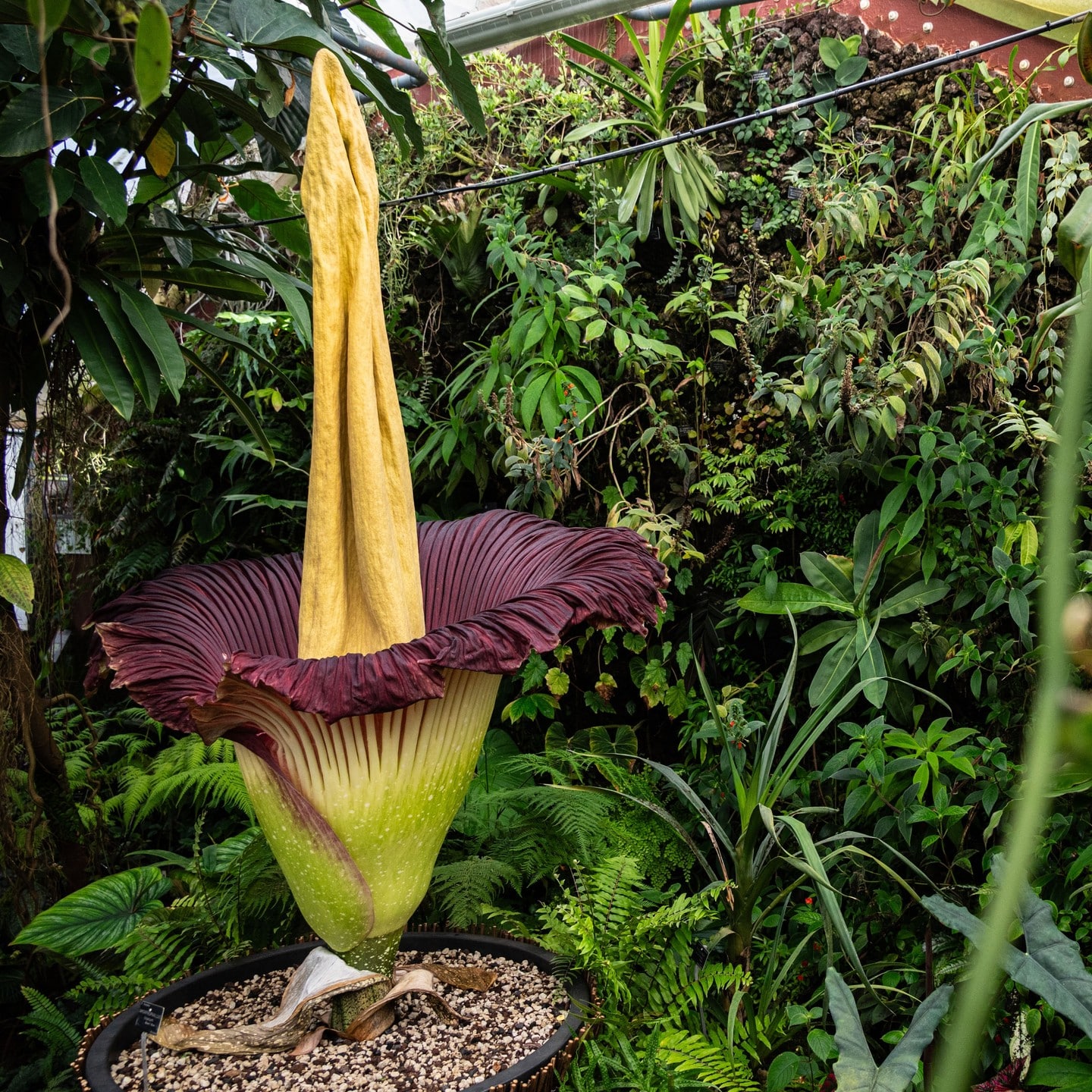A remarkable natural spectacle has captivated thousands of visitors as they witnessed the blooming of a unique and rather suggestive plant known as the ‘titan penis flower’.
This peculiar flower, resembling a phallus, undergoes a lengthy growth process of 7 to 10 years before it finally blooms.
However, despite its long wait, the flowering period of this remarkable plant lasts for only 24 to 72 hours.
The resulting flower is renowned for its colossal size, making it one of the largest blooms in the world.
On 11th July, approximately 15,000 people gathered at the Jean-Marie Pelt Botanical Garden in Villers-lès-Nancy, France, to witness the majestic emergence of this phallic flower.
Frédéric Pautz, the Director of the garden, expressed the anticipation surrounding the event, stating, “It’s years and years of waiting for just a few hours.”
This extraordinary event marked only the fifth recorded flowering of this plant, known as the titan arum, in France since 1878. Moreover, the flower that bloomed on this occasion was the largest titan arum ever seen in the country.
The titan arum was introduced to the botanical garden as a seedling in 2018 and has now grown to a towering height of nearly two metres (6ft 6ins).
The flowering process concluded around 5:15 pm, but the garden extended its opening hours until midnight to allow as many people as possible to witness this remarkable event.
Frédéric Pautz, who travelled from Paris specifically to witness the blooming, expressed his awe, saying, “This is a monumental moment. She’s beautiful. She was already stunning when closed, but she is even more breathtaking in full bloom.”
He added with a touch of humour, “A height of two metres is quite impressive too.”
Originating from the Indonesian island of Sumatra, this plant, known for its endangered status, faces the threat of extinction.
Kew Gardens in London affectionately refers to the titan arum as “one of the most pungent plants on Earth.”
The Royal Botanic Gardens further explains, “Nicknamed the corpse flower, it emits an incredibly foul odour resembling rotten flesh when it blossoms.”
The blooming of this rare and fascinating plant serves as a reminder of the delicate beauty found in the natural world, even if it is fleeting and requires patience to witness.






